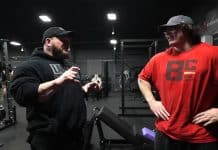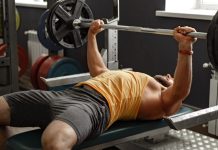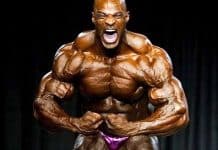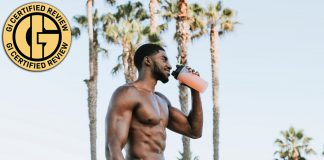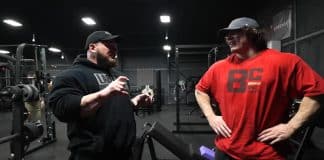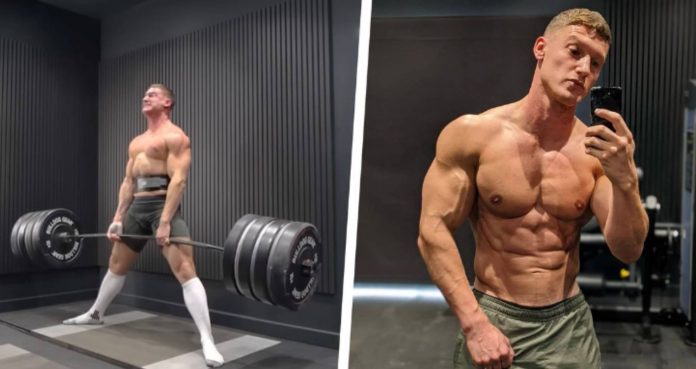
Matt Morsia tests the public to settle the sumo vs. conventional deadlift convo.
If you’re a fitness enthusiast, deadlifts are likely in your routine. But have you ever wondered if the sumo or conventional style is best for building muscle? Fitness influencer Matt Morsia helps answer which deadlift is most effective! Both types of this classic exercise share similarities with scientific experiments — it’s all about trial and error to find out which works better for you. But does science back Morsia’s findings?
In the past, Matt Morsia shared a bodybuilding journey that has led him through building a shredded physique and getting an Achilles injury that kept him away for over three months. Many have benefited from his fitness tips.
Morsia often talks about transparency and not letting other people’s supposed “gains” fool you into thinking you aren’t succeeding. For example, Morsia talks about how lighting and camera angle can make it look like your body added muscle after a 10-minute workout — you often see this Hollywood effect with celebrities in movies where they appear much bigger and leaner than they are.
Now, Matt Morsia is sharing conventional and unconventional tips with his audience. Sumo and conventional deadlifts are both pulling motions, but on a closer look, they emphasize different body parts. As a result, many bodybuilders want to know which to include in their training programs to get the best results.
Matt Morsia attempted to settle the deadlift debate in a public challenge once and for all. Here are his results, what science says, and our thoughts on choosing between sumo and conventional deadlifts.
Check out the YouTube video below Matt Moria posted to his channel comparing the deadlift variations:
Matt Morsia Sumo vs. Conventional Deadlift
After years of being hounded about it, Matt Morsia has decided to put an end to the debate and stated:
“I’ve been getting a lot of stick for a while now. People saying sumo is cheating, sumo doesn’t count.”
In the YouTube video, he heads to a gym to invite the public to do sumo and conventional deadlift quickly. The aim is to show which is harder to do to put this age-old debate to rest.
Matt’s results show (quite favorably for him, we must add) that more people found the sumo deadlift harder to do, concluding it as the superior deadlift. But Matt’s experiment did not consider biomechanics, training history, or individual capacity. So which is truly best for gains? We turned to science to see if we could get answers to see if it matched Matt Morsia’s experiment.
Does Science Back Matt Morsia’s Deadlift Experiment?
This study on both methods of deadlifts shows that while they employ the same muscles overall, they are a bit different (1). While the conventional deadlift is better at working your calf muscles, the sumo deadlift is more effective on your quadriceps and shin. Sumo deadlifts also use a shorter range of motion and require more hip mobility than conventional deadlifts.
Let’s investigate the overall pros and cons of each deadlift.
Conventional Deadlift
View this post on Instagram
Conventional deadlifts are a compound exercise that involves picking up the weight by bending your hips, then extending them and pulling the weight up. For a traditional deadlift, your torso is angled at around 30-45 degrees above parallel, making the lift occur by bending your knees and hinging your hips. Your core must also be contracted to stabilize your spine during movement.
Conventional deadlifts work on all the major muscles of your body, leading to better body strength (1). But they mainly engage the muscles in your posterior chain — back, glutes, and hamstrings. Strengthening your lower back with conventional deadlifts helps prevent lower back pain, which is common in lifters.
You can perform a deadlift with a variety of equipment, including dumbbells and kettlebells, but the most common for lifters is the barbell — which will allow you to use the most weight and build the most muscle.
| Pros | Cons |
| Better for athletes with hip or knee injuries as more of the load is on your back. | Not recommended for builders with lower back or lumbar spine injuries. |
| Works your rhomboids, levator scapulae, and erector spinae (back muscles), etc. | Doesn’t target the leg muscles as well as sumos. |
| The form is easy to achieve for beginners. | Requires greater work to complete the lift. |
| Offers a greater advantage to builders with longer arms. | Not advantageous to bodybuilders with shorter arms. |
Sumo Deadlift
View this post on Instagram
Sumo is a conventional deadlift with a wider stance and is also performed with a barbell. Your legs are further apart, with your toes pointed outwards. When picking up the weight, you keep your chest and torso upright.
Like conventional deadlifts, sumo deadlifts target your legs and back. However, the wider stance targets your glutes and inner thigh muscles more. The mechanics of this movement is more comfortable if you have shorter arms. It also allows for a heavier weight and puts less strain on your lower back.
| Pros | Cons |
| Less stressful for lower back and those with lower back injuries. | Not suitable for people with hip injuries as it may overstress your hip abductors. |
| Better development for the legs because of the stance. | A bit more technical and so not suitable for beginners. |
| Less work needed to complete the lift as you can lock the barbell out at the top of the movement. | More time is spent in the acceleration phase of the lift. |
| Offers greater advantage to bodybuilders with shorter arms. | Not advantageous for bodybuilders with longer arms. |
Our Verdict
When we look at science, despite people’s divided opinion, sumo and conventional deadlifts are similar in both difficulty and motion. They’re great exercises for building strength and hypertrophy in your poster chain. Ultimately, choosing which is best for you depends on your goals.
Conventional deadlifts could be the answer for lifters interested in taking pressure off their quads and working on their calf muscles. But if you have lower back issues and want to build killer quads, then sumo deadlifts are more effective.
Follow us on Instagram, Facebook, and Twitter for more training tips!
References
- Vecchio LD, Daewoud H, Green S. The health and performance benefits of the squat, deadlift, and bench press. MOJ Yoga Physical Ther. 2018;3(2):40‒47. DOI: 10.15406/mojypt.2018.03.00042
- Escamilla, Rafael F.; Francisco, Anthony C.; Kayes, Andrew V.; Speer, Kevin P.; Moorman, Claude T. III. An electromyographic analysis of sumo and conventional style deadlifts. Medicine & Science in Sports & Exercise 34(4):p 682-688, April 2002.


